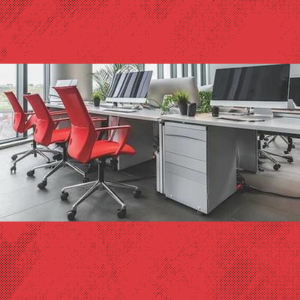Originally published June 26, 2024 | By: John Hackston
Organizations can be siloed, hierarchical places where individuals from different teams don’t communicate with each other, and open-plan offices have emerged as one way to solve these issues. The thought process is that in an open-plan office, communication will be easier and less formal. However, research suggests that any existing benefits are outweighed by negative effects, including noise, distraction, and lack of privacy. In two different studies carried out by The Myers-Briggs Company (in 2015 and in 2022), those working in open-plan offices rated satisfaction with their work environment lower than those working in most other settings. The reality may be that cost savings is the real reason why these spaces are popular.
Cost is also a driver of the move to hot desking, where an employee does not have their own dedicated workspace, but instead can use one of several desks, workstations or areas that they share in common with other workers. However, these arrangements can reduce job satisfaction and worker productivity. This may be because they have a negative effect on an employee’s sense of security and their “territory,” both as an individual and as a member of a group, and of ownership of that part of the workplace that is “theirs.” Some offices have created systems where a staff member can pick up their personalized “desktop” from a storage area and transport it to wherever they are working.
In our research, neither open plan working nor hot desking were popular among employees. Those working in open-plan offices were among the least satisfied with their working environment. When asked in the 2022 study, “What one change would make the biggest improvement to your office or other working environment?” the most common theme concerned having greater privacy and getting rid of open-plan offices. Where possible, then, companies should step back from these office layouts. Realistically, this will seldom be possible, and it will be important to allow workers to control their environment by, for example, allowing them to temporarily personalize their workspace.
Read the full article at Facility Executive.



